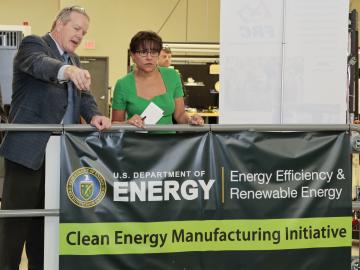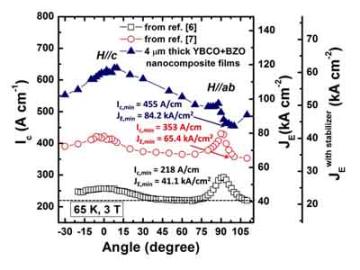Filter News
Area of Research
News Type
Media Contacts

The recently discovered element 117 has been officially named "tennessine" in recognition of Tennessee’s contributions to its discovery, including the efforts of the Department of Energy's Oak Ridge National Laboratory and its Tennessee collaborators at Vanderbilt University and the University of Tennessee.

About 30 Austin-East High School students from Knoxville participated in the National “My Brother’s Keeper Day” at Oak Ridge National Laboratory.
The goal of the White House initiative is designed to help boys and young men of color reach their full potential.
...

The Department of Energy’s Oak Ridge National Laboratory hopes to add a second target station at its Spallation Neutron Source (SNS) in the next 10 years in order to enhance capabilities of in-depth studies of the molecular structure of materials.
Ken Herwig of O...

Secretary of Commerce Penny Pritzker visited the new Institute for Advanced Composites Manufacturing Innovation (IACMI) at Oak Ridge National Laboratory’s Manufacturing Demonstration Facility, praising the advances in manufacturing technology taking place in East T...

The Department of Energy’s Oak Ridge National Laboratory has developed a technology leading to more secure seals on containers filled with nuclear material. The technology uses a light source of entangled photons to verify the continuity of a fiber-based seal. E...

Oak Ridge National Laboratory's Center for Computational Sciences is using supercomputers to design better and less expensive solar panels that can capture the sun’s rays more efficiently and maximize power production.

The ability to control nanoscale imperfections in superconducting wires results in materials with unparalleled and customized performance, according to a new study from the Department of Energy’s Oak Ridge National Laboratory.




